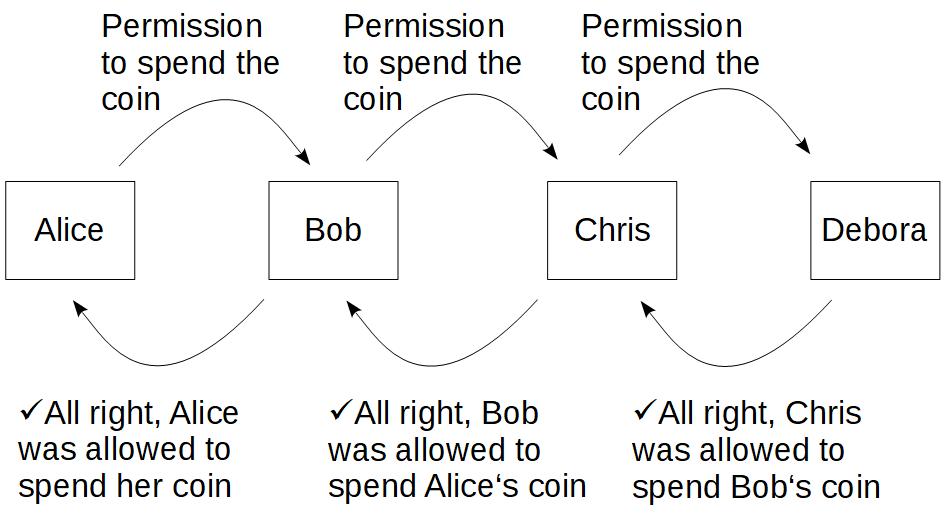Transactions
Last Updated on 20. March 2023 by Martin Schuster
Let us assume Alice (node A) owns a certain amount of digital money. Let’s call this a coin. We explain later where those coins come from. But for now, we just assume Alice owns it.
If Alice wants to send a coin to Bob (node B) she creates a transaction that says: “I allow Bob to spend this coin”. And if Bob wants to send this coin to Chris (node C) he creates a transaction that says: I allow Chris to spend this coin.
A coin basically is the permission to spend a coin granted from the previous owner. And a transaction is the means to grant this permission to another user. Chris would now check if Bob had the right to spend this coin at all. Chris would want to find out that Alice allowed Bob to spend her (Alice’s) coin. This goes all the way down to the first owner (in our case Alice).

You might think that this is really difficult, particularly if a coin is spent many times. And yes, checking the whole chain would take a lot of time. But there is a solution where you only need to check the last step. You will see this in the course of this lesson.

 Register
Register Sign in
Sign in